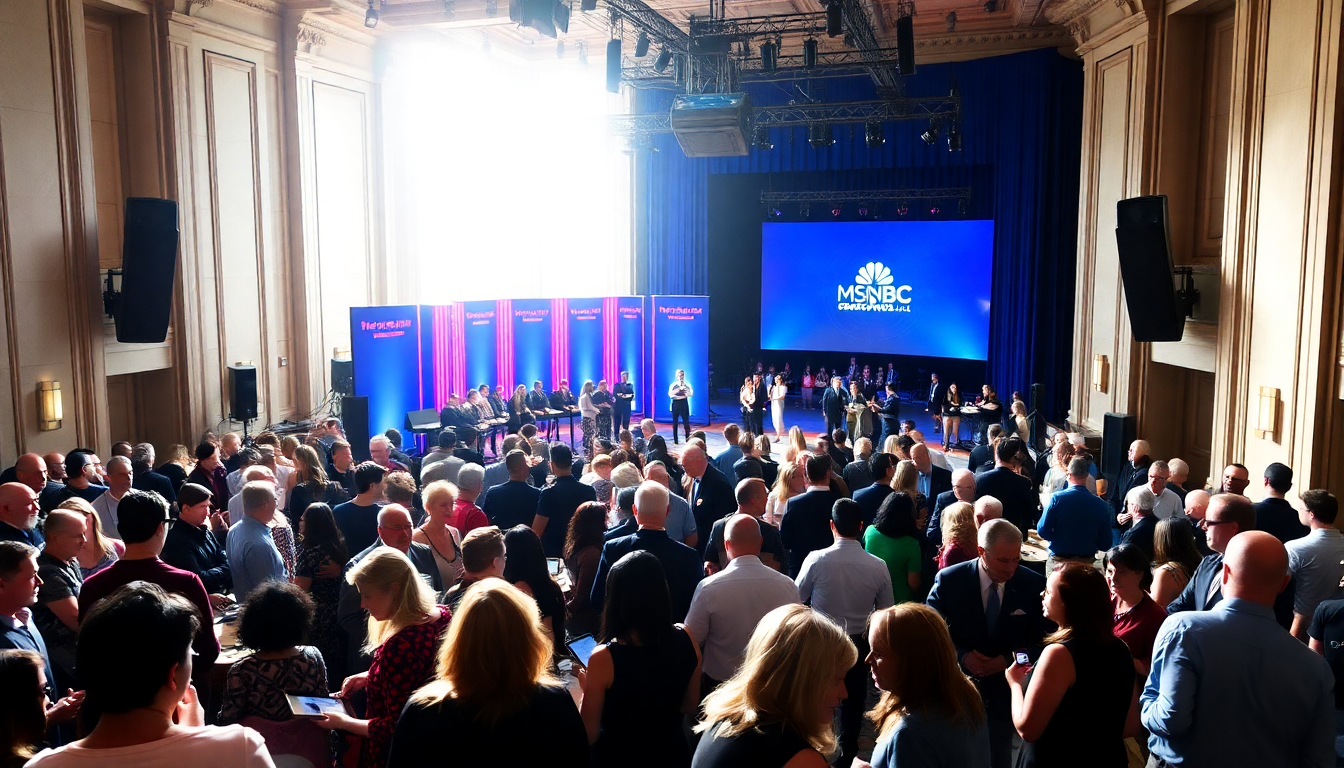Table of Contents
In a world where traditional media is changing at breakneck speed, networks are getting creative to connect with their audiences. Take MSNBC, for example. They’re gearing up for their second annual event, ‘MSNBC Live ’25: This Is Who We Are.’ Set to unfold at the Hammerstein Ballroom in Manhattan, this event promises a one-of-a-kind experience for attendees, featuring a blend of familiar hosts and special guests. Plus, it offers a rare opportunity for fans to interact directly with some of the network’s most notable figures. This shift towards live events isn’t just a gimmick; it’s part of a larger trend in the industry aimed at meeting audiences where they are, especially as digital platforms continue to transform how we consume content.
Why Live Events Matter in Media
As more viewers turn to digital platforms for their news and entertainment fix, traditional networks like MSNBC are realizing the power of live experiences. Lauren Peikoff, MSNBC’s executive producer of events, highlights how crucial it is to connect with audiences beyond just linear broadcasting. This strategy not only boosts viewer loyalty but also opens up new revenue streams through ticket sales and merchandise.
Live events create a space for deeper connections, letting audiences engage with their favorite hosts and journalists. By fostering a sense of community, networks can cultivate a dedicated following that goes beyond the screen. The MSNBC conference, reminiscent of events like ‘BravoCon,’ aims to provide an immersive experience that truly resonates with fans, showcasing the network’s commitment to its audience.
Other networks are catching on too. CNN, for instance, has hosted ‘Citizen’ events that bring newsmakers and anchors together to tackle pressing topics. These gatherings not only foster audience engagement but also create memorable moments that strengthen viewer loyalty. Similarly, Fox News Channel’s ‘Patriot Awards’ blend entertainment with meet-and-greet opportunities, highlighting just how versatile live events can be in the media landscape.
Lessons Learned from Previous Events
Looking back at last year’s gathering, Peikoff noted that audience feedback revealed a strong desire for personal connections with MSNBC hosts. Attendees were excited about chances to engage, whether through selfies or direct Q&A sessions. These insights are gold; they help shape future events to ensure they not only meet but exceed audience expectations, fostering a genuine sense of belonging.
As networks shift towards more interactive components, the potential for meaningful audience engagement expands. By offering fans a chance to connect with their favorite personalities, networks can build a loyal viewer base eager for authentic experiences. This approach doesn’t just enhance the appeal of live events; it positions networks to thrive in a competitive landscape.
What’s Next for Live Media Events?
With the media landscape in constant flux, the future of live events is looking bright. As MSNBC gears up for its next big event, they’ll feature a diverse lineup of hosts, including well-known figures like Rachel Maddow and Jen Psaki. The decision to lower ticket prices reflects a smart understanding of the current economic climate and a desire to bring in a wider audience.
As networks continue to explore live events as a way to engage with viewers, keeping an eye on emerging trends and audience preferences will be key. The success of these events will likely depend on adaptability and a clear sense of what resonates with audiences. By embracing creativity and innovation, networks can redefine their relationship with viewers, ensuring that live events remain a vital part of the media landscape for years to come.


